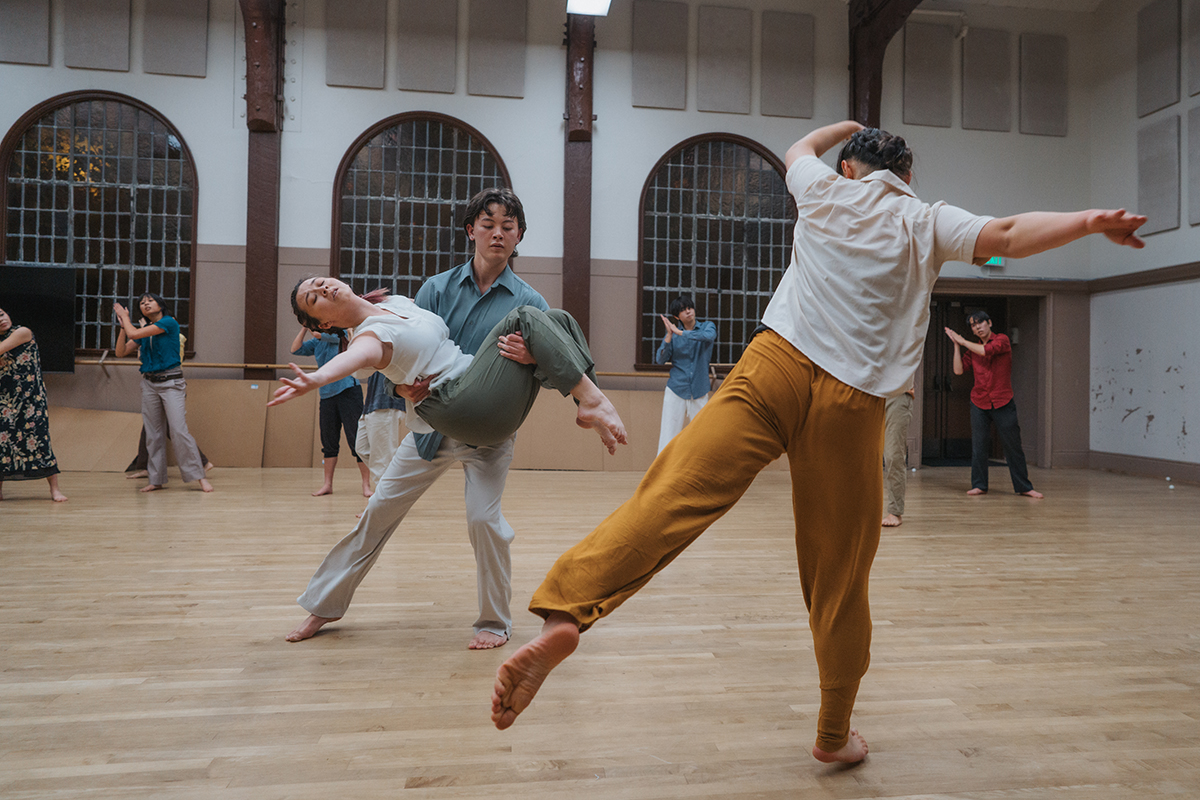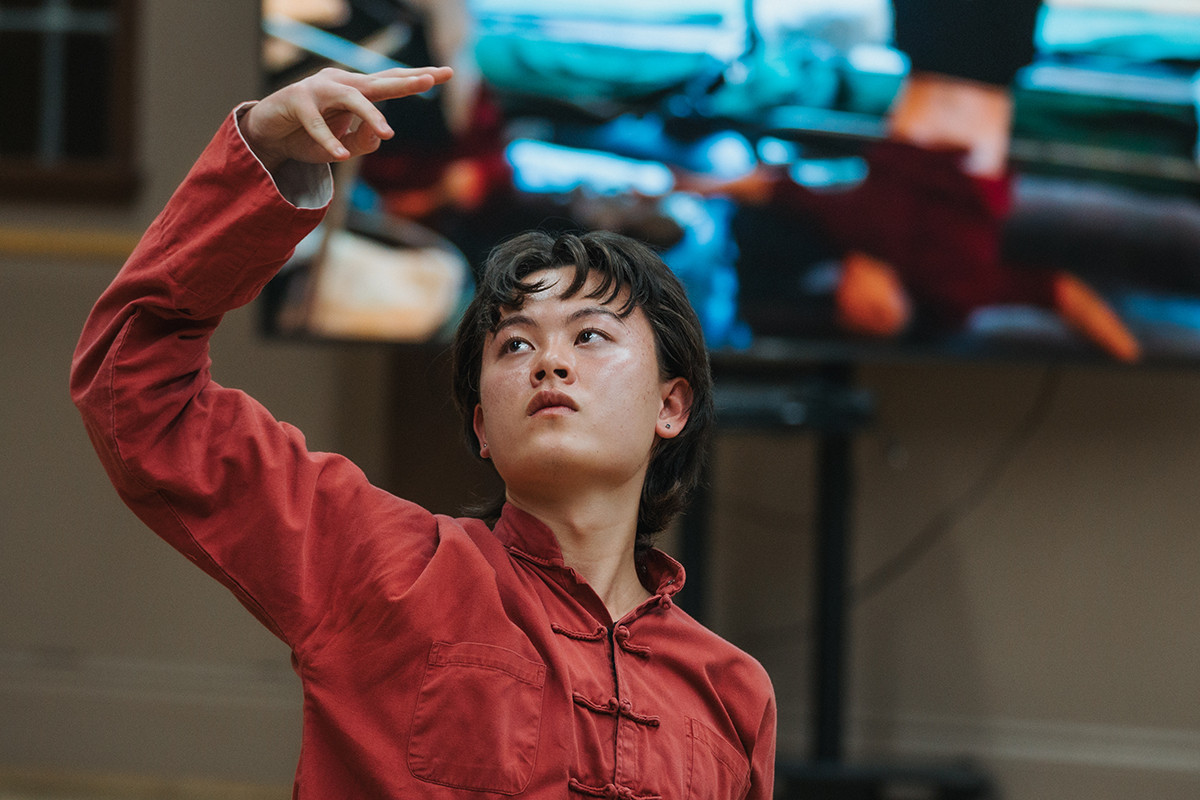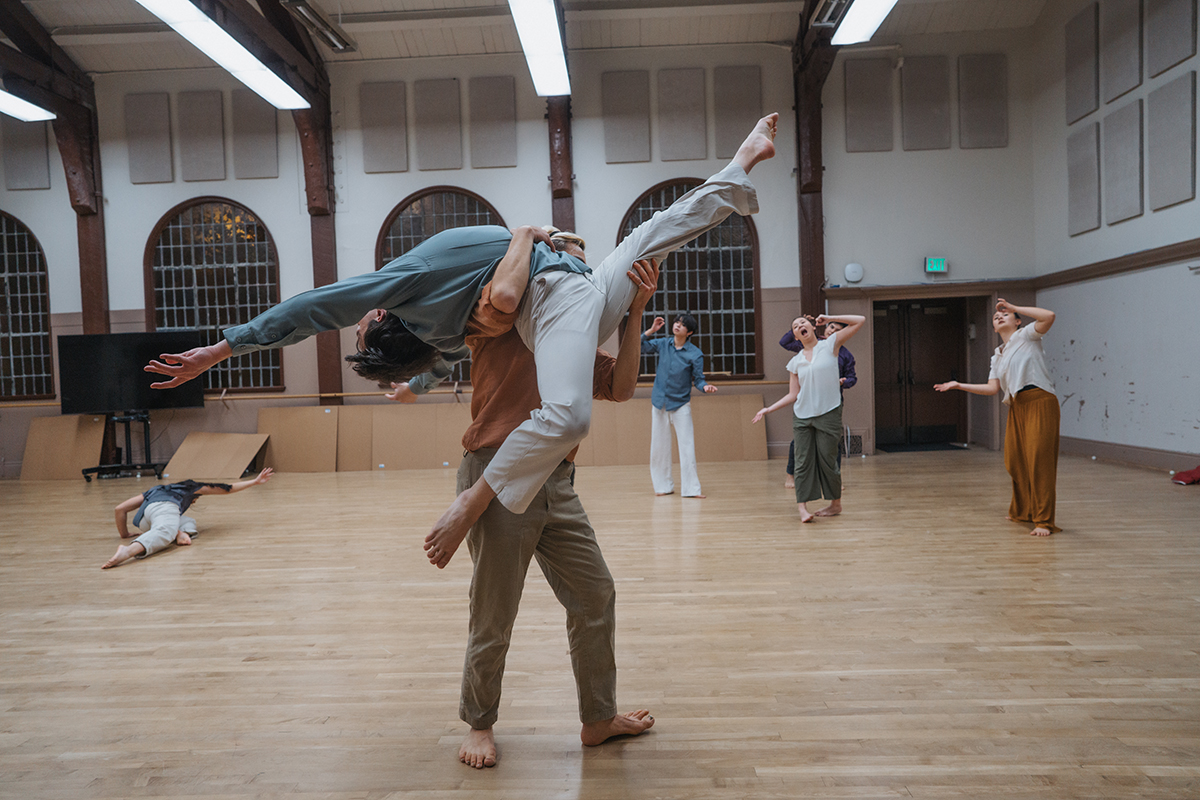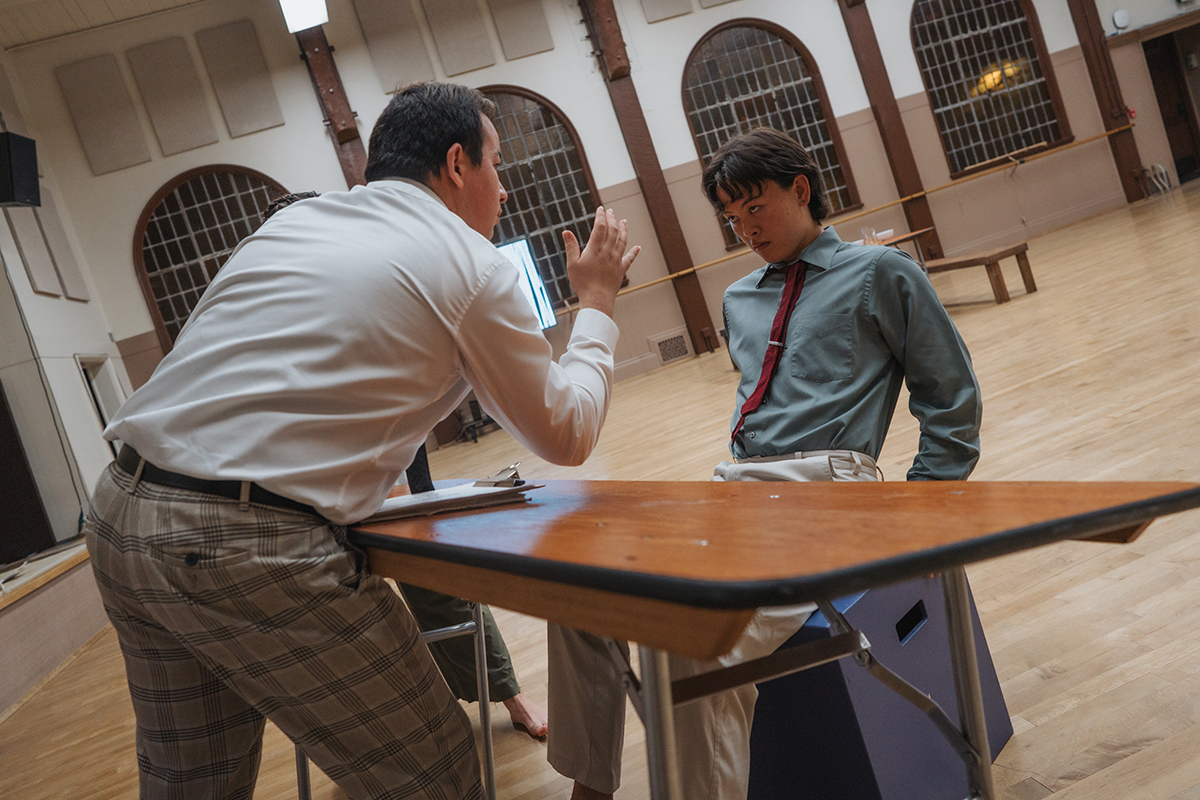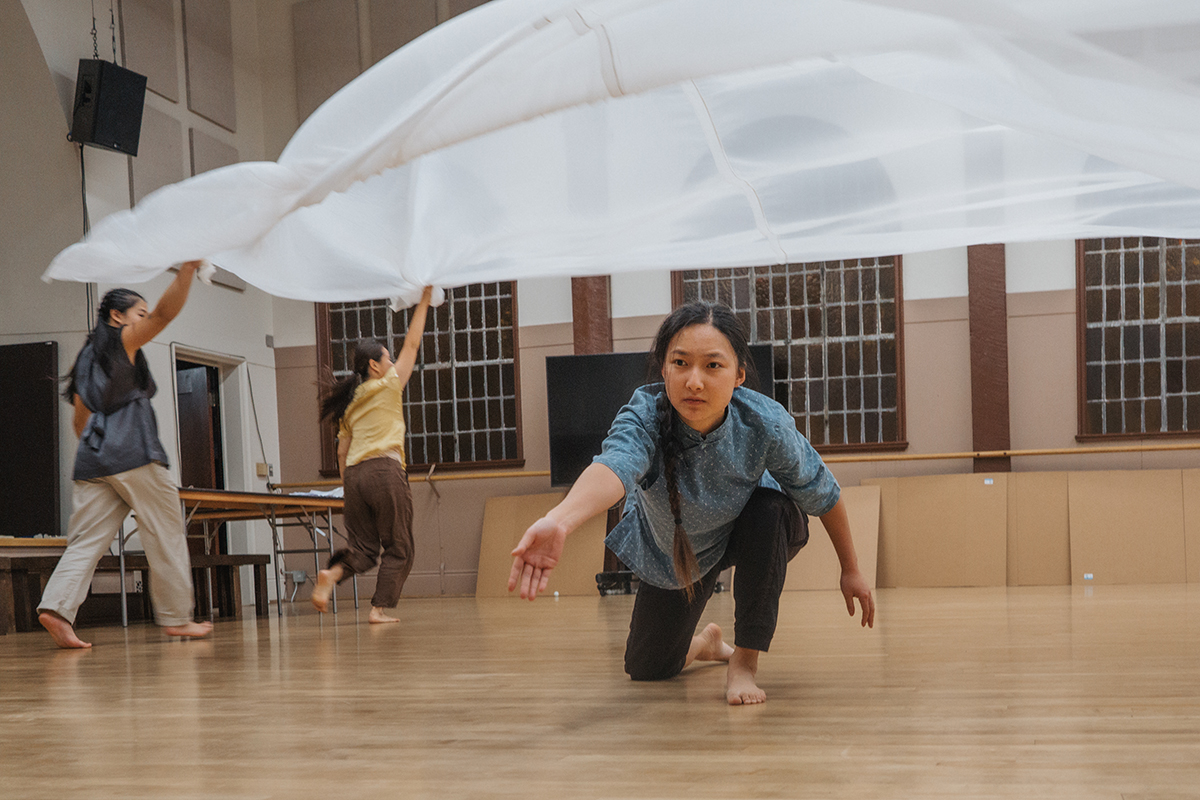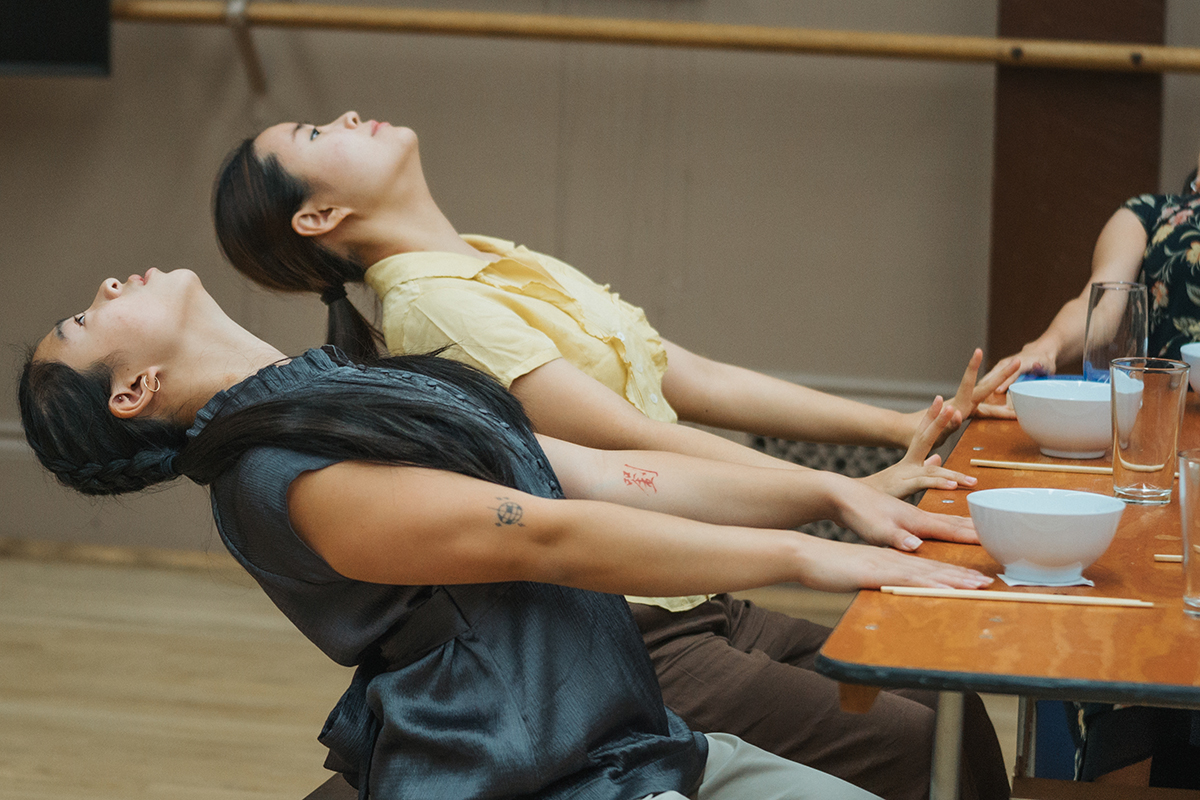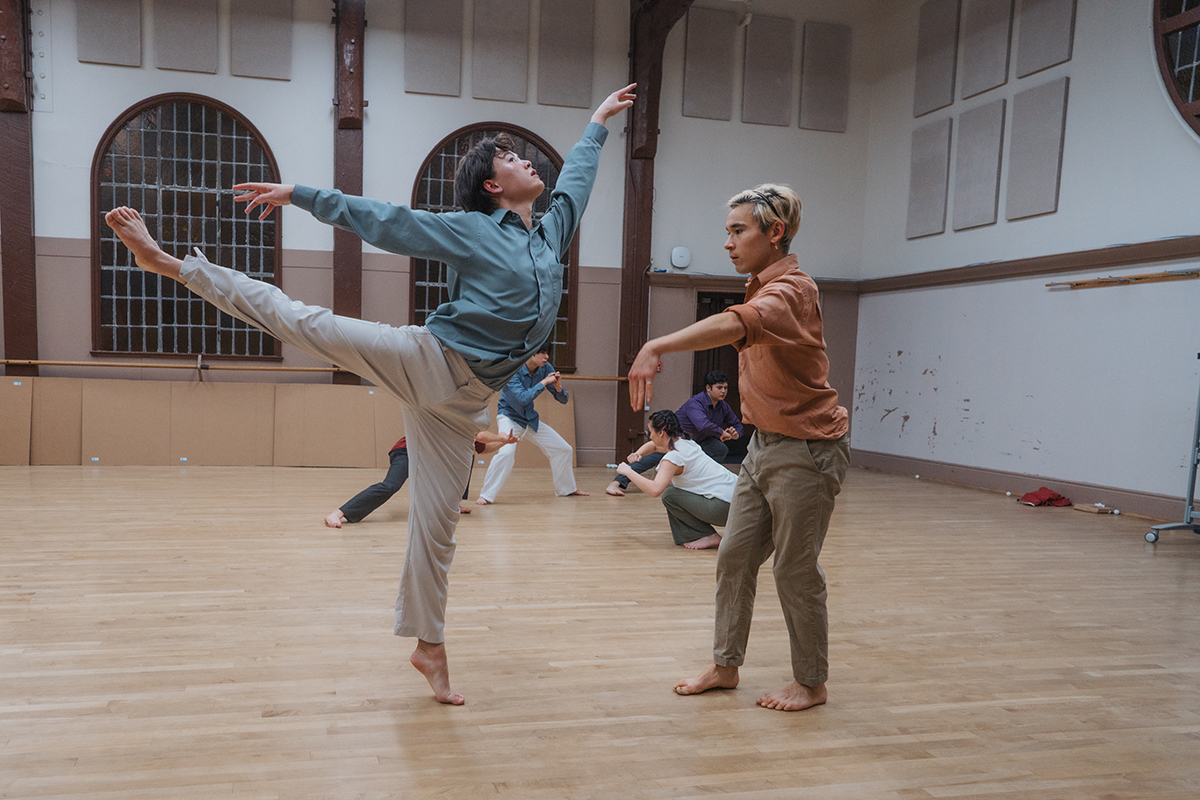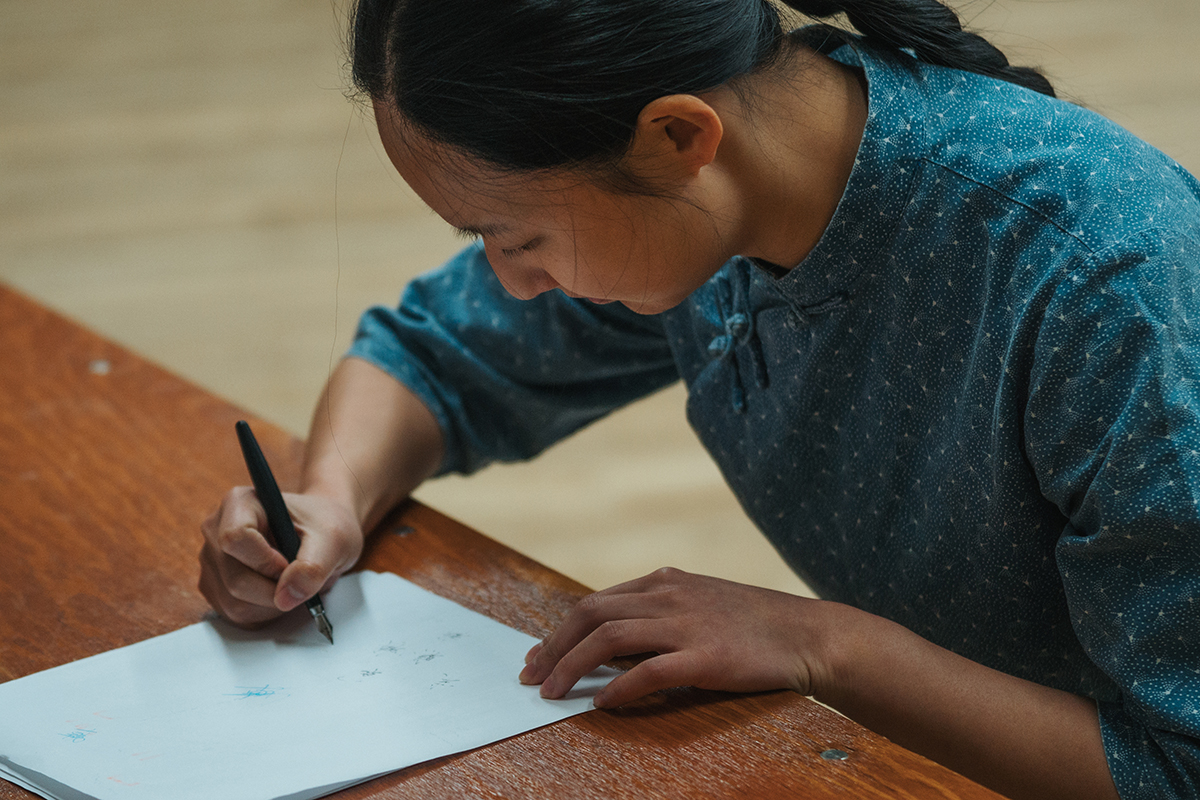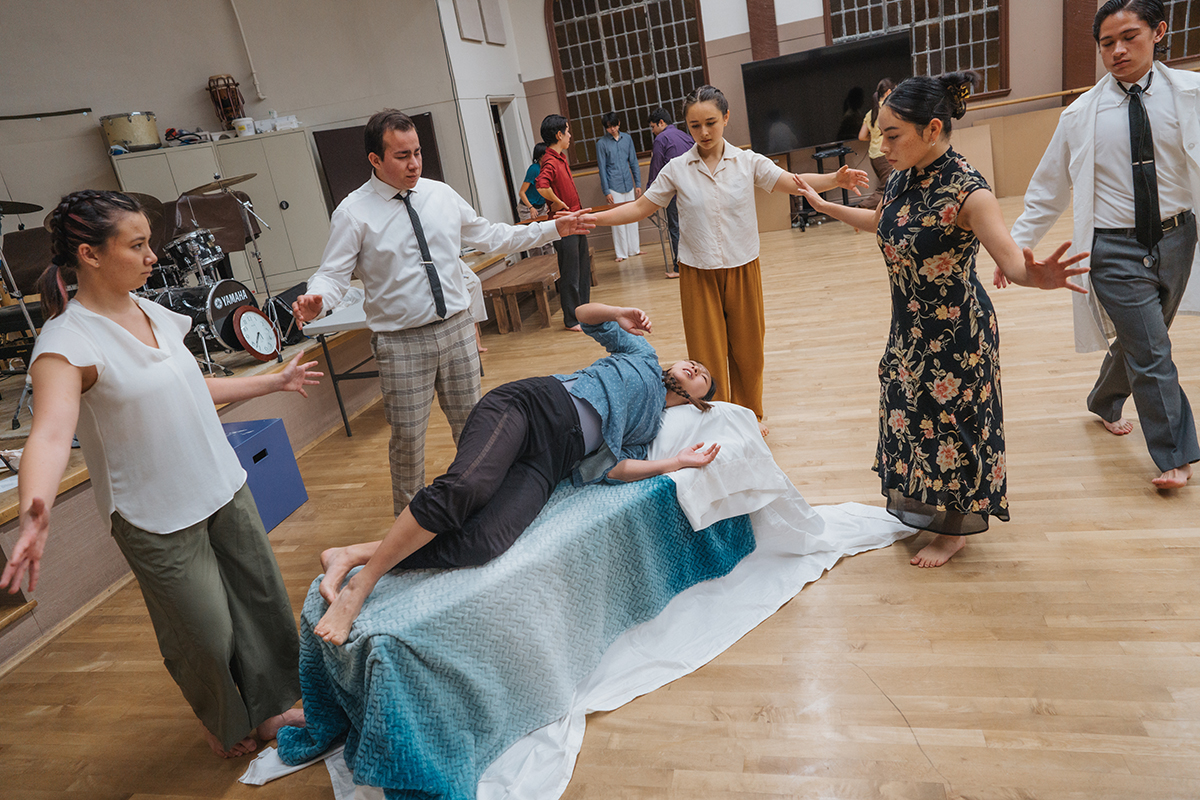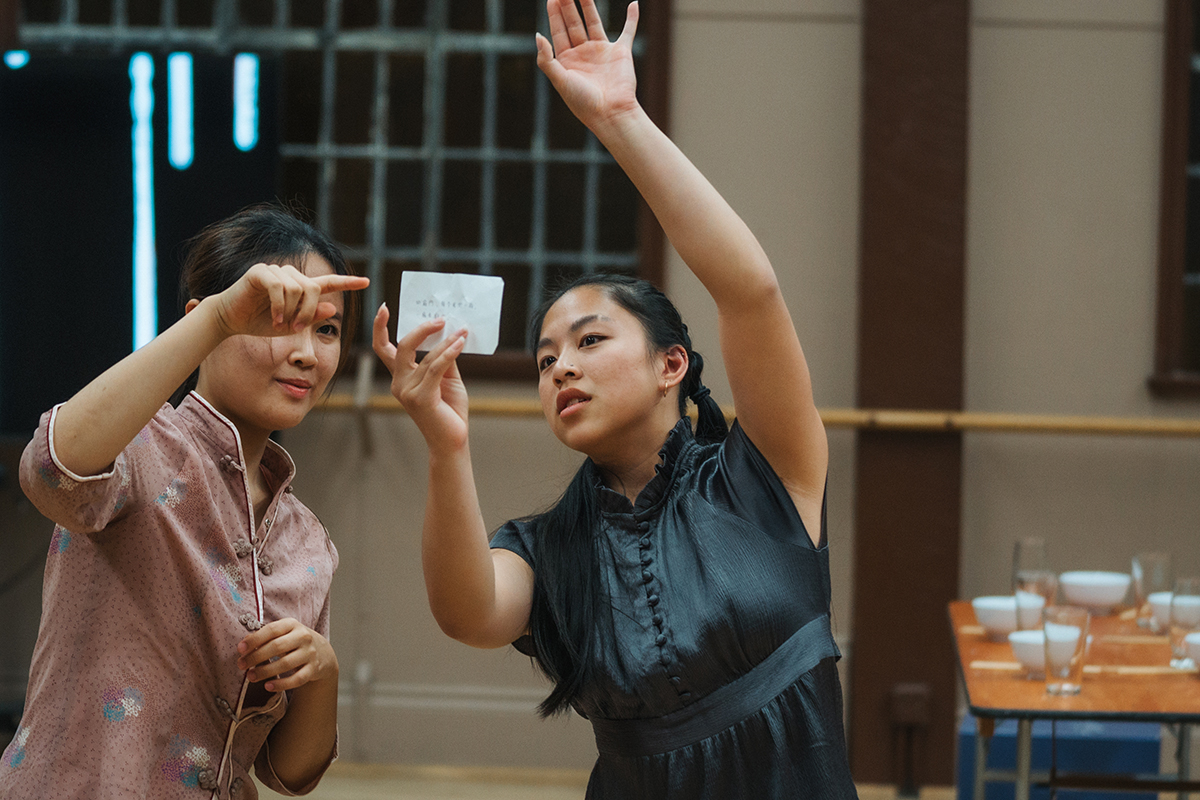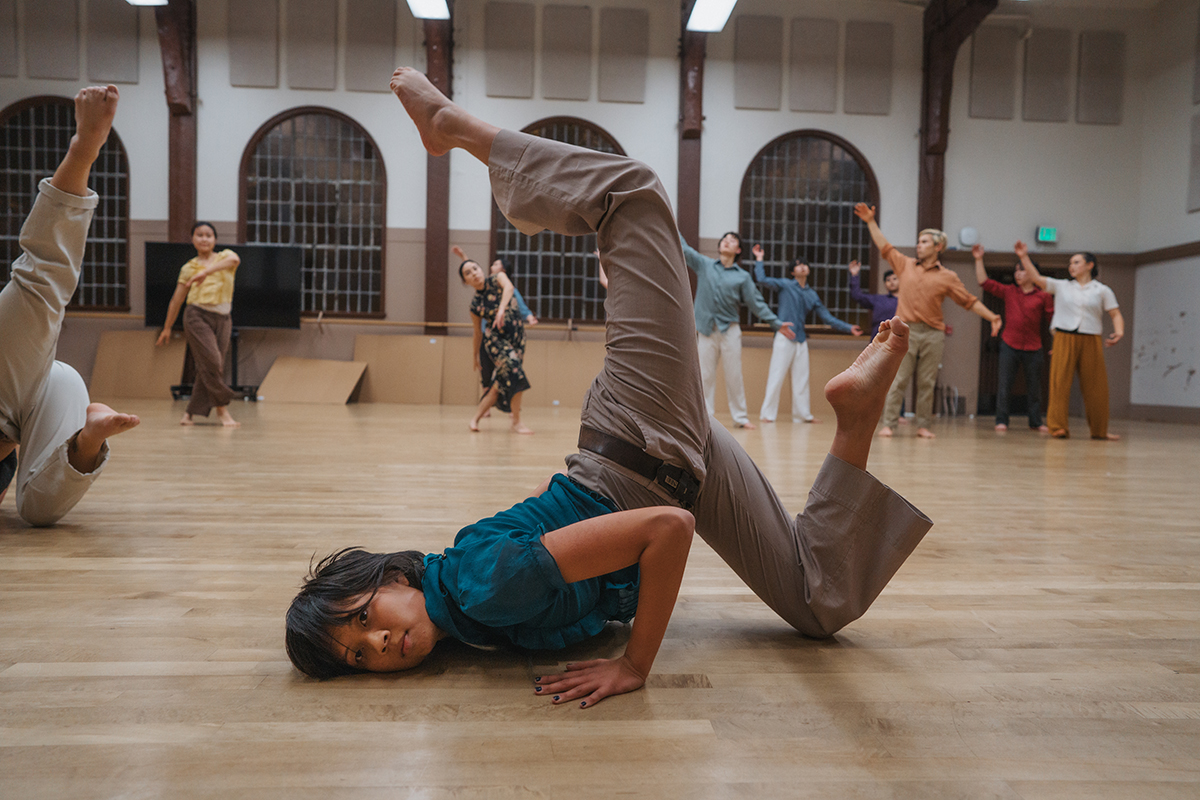Students explore Angel Island detainees’ experiences through dance
Within These Walls, presented by the the Department of Theater, Dance and Performance Studies and the campuswide arts project A Year On Angel Island, will run Feb. 23-26

February 21, 2023
When Lenora Lee, an artistic director, dancer and choreographer, debuted Within These Walls in 2017, she had no idea what the impact would be on the audience.

Lenora Lee first debuted Within These Walls in 2017. Now, it’s the 2023 Berkeley Dance Project, presented in conjunction with a Year On Angel Island. (Photo by Hien Huynh)
The immersive work was performed by a cast of 14 dancers on San Francisco Bay’s Angel Island, the site of the historic immigration station that enforced the Chinese Exclusion Act of 1882. The performance reflected the experiences of 170,000 Chinese immigrants who were held on the island, some for months on end, and one person for nearly two years.
Dancers moved through the detention barracks and performed scenes critical to the detainees’ experiences, and the approximately 700 audience members could choose where to walk and which characters to follow.
“I think because the audience was physically in the same space as us, they could feel the experiences the characters were portraying,” said Lee. “Being able to share performance work in this way enables audience members to ask themselves: What is their role? Are they passive viewers? Are they participants? How can they discern what’s right and wrong for themselves? Can they do something about what’s happening? Many people told us that by just stepping into the station, they could feel the weight of history.”
On Feb. 23-26, UC Berkeley’s Department of Theater, Dance and Performance Studies will present Within These Walls as the 2023 Berkeley Dance Project. It’s also part of the campuswide arts project A Year On Angel Island.
The Berkeley performance is the first time the entire work of Within These Walls will be performed on a theatrical stage, and it’s the first full-length project Lee has staged with university students.
“Their own creativity is unrestricted, and there’s a level of presence and openness that is so refreshing to see as they pursue their growth as artists,” she said.
It was as a student at UCLA that Lenora Lee started exploring her family’s past detainment at the U.S. Immigration Station on Angel Island through dance. In 2010, she created her first large-scale multimedia piece, with media designer and Berkeley alum Olivia Ting, called Passages: For Lee Ping To at Dance Mission Theater. It traced her maternal grandparents’ immigration journey from southern China to San Francisco, where they eventually settled.
The immigration station on San Francisco Bay’s Angel Island, in operation from 1910 to 1940, enforced the Chinese Exclusion Act of 1882. The act was the first significant law restricting immigration to the U.S. and the first law to limit immigration based on race or nationality. It set a precedent for restrictive immigration of the country.

U.S. immigration station on Angel Island, in operation from 1910-1940. (Photo courtesy of the National Archives)
Over three decades, approximately 170,000 Chinese immigrants — many of whom were young laborers and farmers — and immigrants from dozens of other countries from around the world were detained on Angel Island. They were incarcerated in overcrowded detention barracks in harsh and unsanitary conditions as they waited to be processed. Detainees endured invasive medical exams and interrogations to verify their identities.
“The questioning was so in-detail that you might not know the answers, and you would be subject to speculation and deportation for failing to answer correctly,” said Lee. “For example, they might ask, ‘How many houses were in your village?’ or ‘How many steps is it from your front door to your well?’ Oftentimes, families had to borrow money from fellow villagers to pay for their passage overseas. For a boy who’s only 13, it’s very intimidating to be questioned in that intensity, and it was a lot of pressure because he didn’t want to get deported and let his village down.”

Poetry written and carved into the walls of the detention barracks on Angel Island by Chinese detainees. (Photo by Susan Moffat)
While detainees awaited processing and their verdict — if they could land or if they would be deported — some of them carved poetry in elegant strokes into the walls of the detention barracks. More than 200 poems on the walls tell stories of the lives and families the immigrants left behind. Of being imprisoned, looking through torn curtains at the island’s lush landscape, surrounded by an expansive bay. Of deep loneliness, and of uncertainty and anxiety about their fate.
These poems were discovered in 1970 by a California State Park ranger, and analyzed and translated by the local Asian American community. One of Lee’s collaborators on Within These Walls, poet and playwright Genny Lim, was instrumental — along with Him Mark Lai and Judy Yung — in compiling and translating these poems into the book ISLAND.
In 2017, Lee revisited the themes in Passages: For Lee Ping To and expanded the performance to create Within These Walls, a site-specific, immersive performance with a cast of 14 dancers. It debuted in September 2017 inside the Angel Island detention barracks, as part of a community-wide commemoration of the 135th anniversary of the Chinese Exclusion Act. Multiple scenes were performed simultaneously throughout the barracks, and audience members could choose which characters to follow at any given moment.
“We recreated very important scenes that we felt were critical to the experience and to making visible the poetry on the walls,” Lee said. “Audience members were crying. There were audience members who wanted to interact and perhaps even stop what was going on. We were inviting them into the space as one of the detained. Many people told us that by just stepping into the station, they could feel the weight of this history.”
Now, Lee is restaging Within These Walls for the 2023 Berkeley Dance Project presented by the Department of Theater, Dance and Performance Studies. Each of the 14 student-dancers embodies a character. Some of the characters are based on real people, including Lee’s maternal grandmother, Lee Ping To, and advocate Penelope Wong’s father, Wong Gung Jue, both of whom were processed on Angel Island. During the performance, images of immigration photos and documents, along with doctor and interrogation scenes filmed underwater, will be projected onto the walls and onto large pieces of fabric with poetry painted on them.
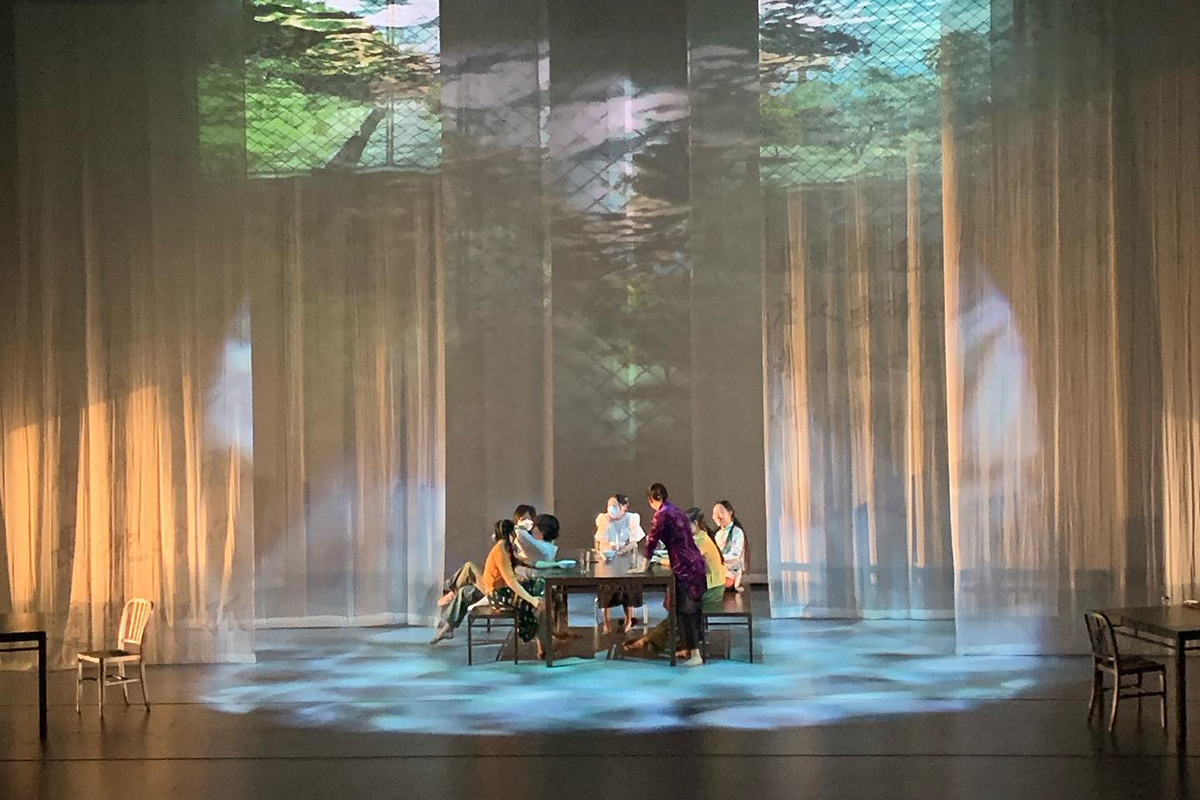
Berkeley students in a dress rehearsal for Within These Walls in the Zellerbach Playhouse. (Photo by Olivia Ting)
The Berkeley performance is part of a yearlong, campuswide project by Berkeley Arts+Design and Future Histories Lab: A Year on Angel Island. The project is sponsoring a series of music and dance performances, exhibitions and public conversations, using Angel Island’s immigration station as a jumping-off point to start discussions about race, global migration and architectures of incarceration.
To begin to explore the themes from Within These Walls, Lee asked her students to share their own families’ migration stories. Gilberto Martinez Martinez is a third-year dance and performance studies student whose family immigrated to the U.S. from Mexico when he was 5. For Martinez, learning about his classmates’ families and where they came from was profound. “Seeing the range of not just experience, but the emotion they felt through all of it, it was still so similar,” said Martinez. “We still had the breaking away of family, the pressure to live up to the American ideal, to be the translators for our parents, to be the bridge between cultures.”

From left: Gilberto’s mom, Maria; Gilberto; his sister, Cruzita; his brother, Goyito; and his dad, Gregorio. (Photo courtesy of Gilberto Martinez Martinez)
Lee also took the class to Angel Island. After they deboarded the ferry, the students walked through the former detention barracks, now a designated National Historical Landmark, and examined the Chinese poetry on the walls. “The writing was gorgeous,” said Martinez, who grew up in California’s Central Valley. “Before that, I didn’t know about the immigration station on Angel Island. It was mind-boggling, to say the least — seeing how little space they had, the awful environments where they would have to go shower, use the restroom. It broke my heart entirely.”

Lee took the students to Angel Island to see the conditions detainees lived in. (Photo by Gilberto Martinez Martinez)
As Martinez was reading informational panels that detailed specific detainees’ experiences, he saw some familiar names and stories. After checking with his parents, he confirmed that several of his family members had been held on Angel Island during their journey to the U.S. in the 1930s. “I had heard these stories from my great-uncles and great-aunts, but I didn’t realize what they had gone through,” said Martinez. “When they talked about it, it was just like, ‘Oh yeah, I had to go there for a check-in. It happened. We moved on.’ To relive those moments was just too hard for them.”

Berkeley student-dancers rehearse a medical examination scene from Within These Walls. (Photo by Robbie Sweeny)
In the Berkeley Dance Project performance of Within These Walls, there are seven scenes that represent experiences detainees had: two eating scenes, three interrogation scenes and two medical examinations, which Lee said were often invasive and traumatizing for the detainees. “In traditional Chinese medicine, healing modalities included acupuncture, acupressure, Chinese herbs,” said Lee. “You didn’t have to take off your clothes to be examined and investigated, poked and prodded. To put it lightly, it was shocking, humiliating and traumatizing to be dealt with in that way.”
Martinez plays the interrogator, who questions detainees and delivers their verdicts. “It has been hard to resonate with this character because I feel like the villain,” said Martinez. “My character wants to keep people away, push people out. It’s like, ‘Prove to me that you belong here, that you are here, that you’ve been here. But I don’t believe it. Whatever you say is not true. You’re lying.’ To this day, when we end rehearsal, I usually need a moment. I have to take a breather to get back to my humanity. But after I learned more about what it meant to be in that space, I realized this is what that character and the story needs.”
The Chinese Exclusion Act was in effect from 1882 until 1943, followed by quotas that limited the number of Chinese people who could immigrate into the country until 1965. After more than 80 years of anti-immigrant legislation, the effects of the laws persist. For Martinez, who has had family members detained by Immigration and Customs Enforcement (ICE), it feels like nothing has changed. “It’s like a slap in the face,” he said. “In essence, what the Chinese detainees experienced decades ago is still happening all around us.”
And, Lee said, there’s concern, given the current anti-Chinese and anti-Asian sentiment in the U.S. that flared up with the COVID-19 pandemic, that something like what happened on Angel Island could happen again — only worse. “Who’s to say that the Chinese aren’t going to be attacked and held suspect in a much harsher way in the future if things become worse with the U.S.’s relationship with China? It’s been happening for the last three years with Asian Americans being targeted and blamed for the pandemic.” she said. “But there’s a real threat that it could become even more amplified.”

Within These Walls is the 2023 Berkeley Dance Project. Performances run from Feb. 23-26. There will also be a post-show discussion on Feb. 24 and two pre-show talks on Feb. 25 and 26. (Photo by Robbie Sweeny)
For Martinez, performing in the piece has deepened his respect for his parents and family, and what they sacrificed and endured to make their own immigration journeys. “As kids of immigrant parents, we know they went through something traumatic to be here so we could have better lives. But now, seeing a representation in front of me and playing a character that kept people from seeking a better life, it feels completely different. I don’t think I would have been brave enough to experience what they and so many others did.”
Lee said she hopes that Within These Walls has and will continue to spark more curiosity and conversations about immigration issues happening now in the U.S. And she hopes it ignites interest and excitement about the potential for sharing these issues related to human rights and social justice through performance work.
“Dance and other forms of art can reach people on an emotional level and can create an openness in people, sparking deeper levels of compassion and empathy that other forms of communication cannot,” she said. “I hope Within These Walls helps people realize the impact the arts can have and how it can serve society, and build bridges of communication across economic, social, class, cultural, geographical and generational divides.”

Lee (front left) and SanSan Kwan (back left), production coordinator and chair of the Department of Theater, Dance and Performance Studies, with student-dancers in Within These Walls. Johnny Huy Nguyen (front right) is a Lenora Lee Dance rehearsal assistant and an original castmember of Within These Walls. (Photo by Robbie Sweeny)




